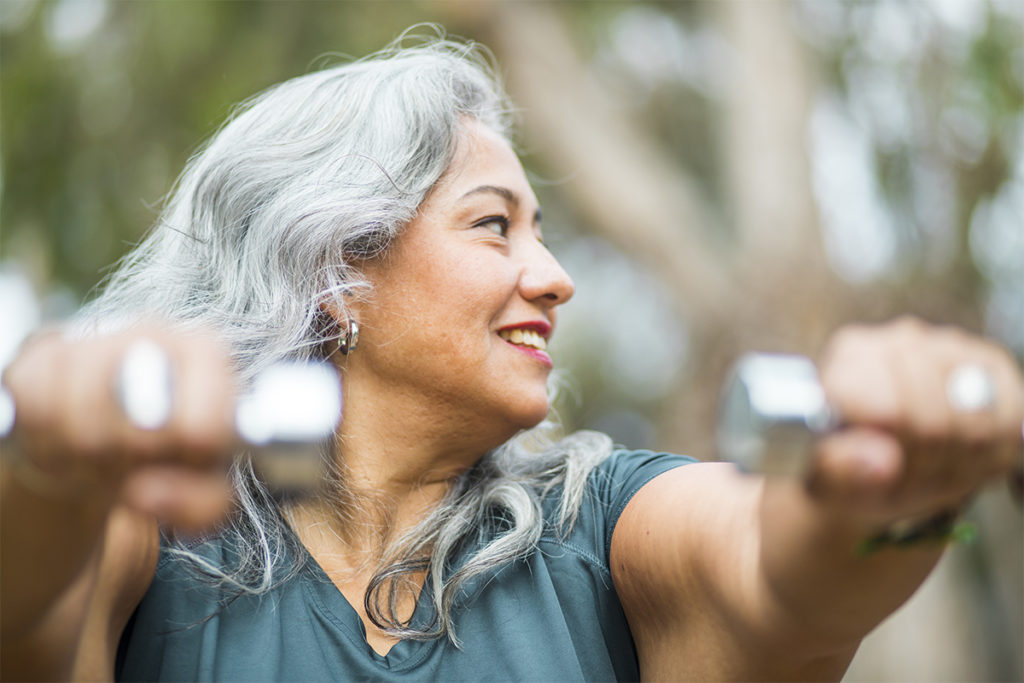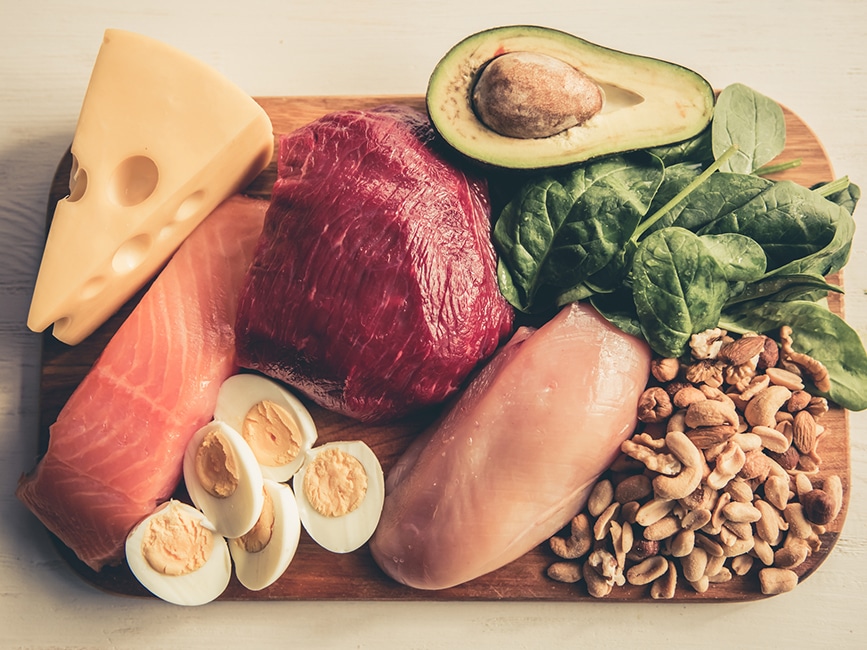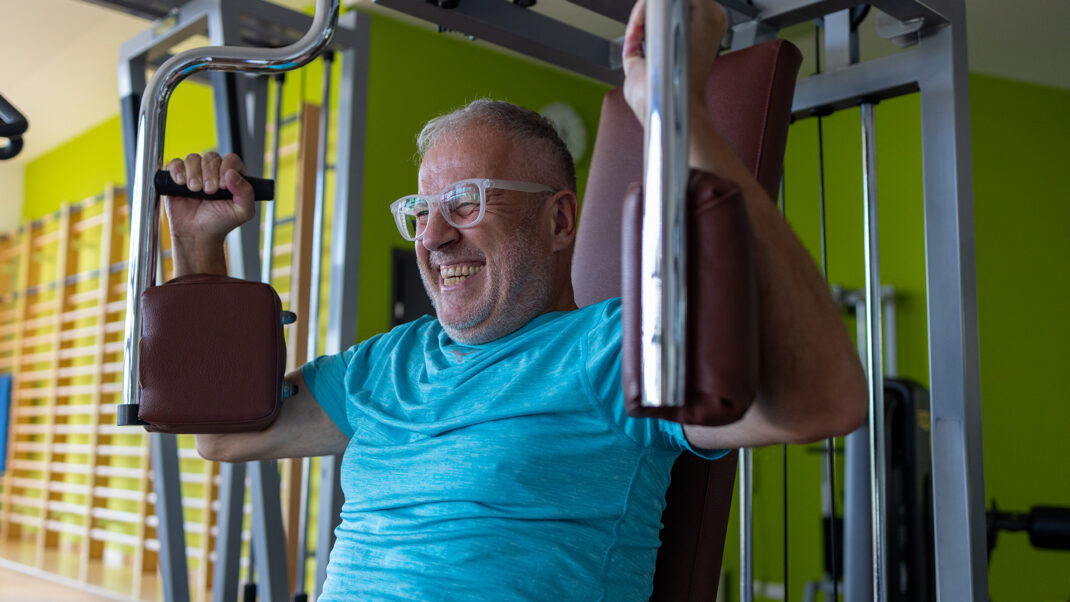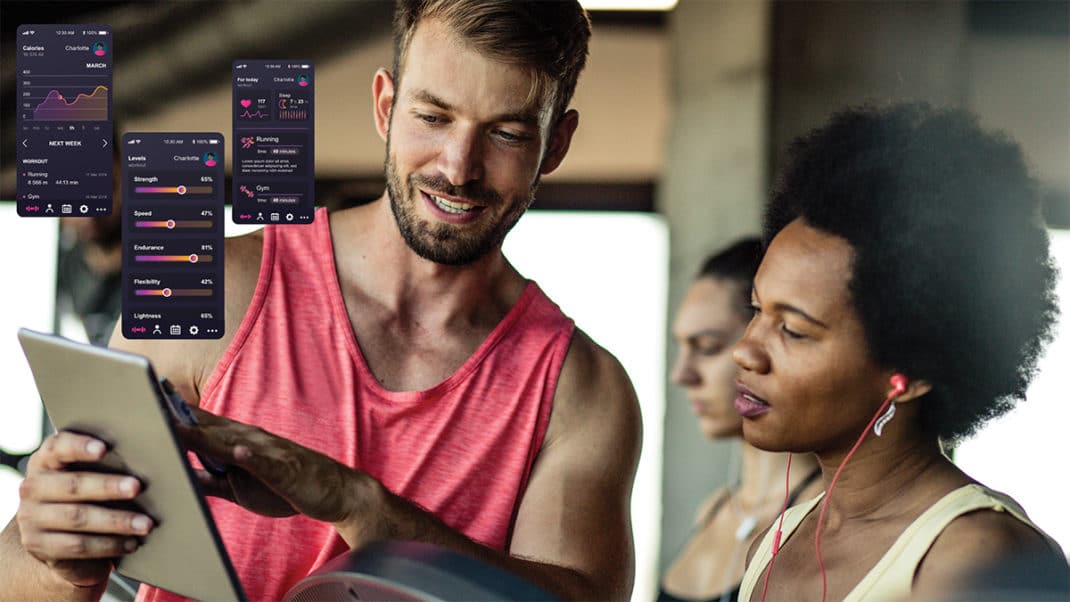Power Training for Older Clients
Try this power training program with your senior clients.

Power training for your active agers can be a vital part of programming.
Why? Improving speed and strength seems to have a more positive impact on physical function than boosting strength on its own. Very few movements in daily life are performed in a slow, controlled manner. As we get older, we become slow because we tend to stop moving at higher velocities. By helping your clients maintain speed, you will do them the service of training them for the sport of life.
Here, Gilles Beaudin, MSc, provides a sample program. Try this simple progression to bring your older clients into the power training zone and gradually build their strength and velocity.
1. Box Jump Down
This beginner power move will train leg and hip muscles to recruit muscle fibers that absorb the shock with eccentric contraction.
- Stand on top of 4- to 12-inch box or platform (depending on ability).
- Jump off box and land with both feet at once, absorbing landing forces with quarter-squat (avoid locked knees).
- Begin with 2 sets of 10–12 repetitions. Gradually increase volume, and progress intensity by raising box height.
2. Box Jump Up
Next, coach an explosive concentric contraction by reversing first exercise to go from floor to box.
- Using same 4- to 12-inch box or platform, assume ready position, feet on floor and facing box from few inches away.
- Crouch into quarter-squat and, using upward swing of arms for added velocity, jump and land with both feet simultaneously on box.
- Step down and repeat. Use same progression matrix as in previous exercise.
3. Jump Squat
This move combines elements of the box jumps, but a prerequisite for this move is an ability to perform a body-weight parallel squat with good form.
- Once client can do parallel squats, progress to squatting down and raising back up as fast as possible, calf-raising onto toes.
- Progress from tiptoes at top of move to little hop off floor, while arms propel movement upward. Landing should be followed immediately by returning to original squat position. Move should be smooth and fluid throughout, without jerks or stops, and with soft, silent landing that absorbs downward forces.
- Over time, progress to higher jump until client achieves maximum jump. Start with 3 sets of 5 repetitions and progress to 3 sets of 15 maximum jumps with 2–3 minutes of rest in between.
4. Push-Press
Bring weights (dumbbells or a barbell) into the mix for this targeted full-body power move. (Dumbbells will reduce the risk of hitting the chin or nose.)
- In standing position, hold weights at shoulder height. Using quarter-squat ready position from jump squat, push weights overhead with speed, popping them upward, then absorbing downward force using arms, legs and core.
- Start with 2 sets of 8–10 and progress load over time.
5. Kettlebell Swing
This total body move can be a bit technical for beginners, so take care to ensure great form. Practice with minimal load until the client masters the move.
- Stand with feet shoulder-width apart and hold weight with both hands centered in front of legs.
- Assume quarter-squat position and quickly stand up straight while squeezing glutes and thrusting hips forward.
- Allow weight to come up in front, around chest level. Let gravity take weight back, then return to quarter-squat with eyes and chest forward at all times.
- Emphasize fluid motion that transfers power from hips to kettlebell, rather than “muscling it up” with arms. Start with 2–3 sets of 5–10 and progress.
Learn more about power training in “Power Up Your Aging Client.”
See also: Solutions for Age-Related Decline






